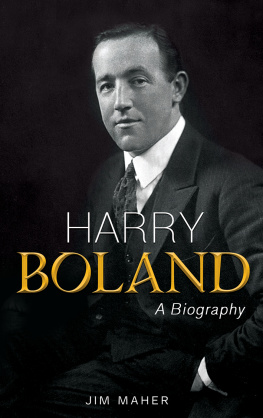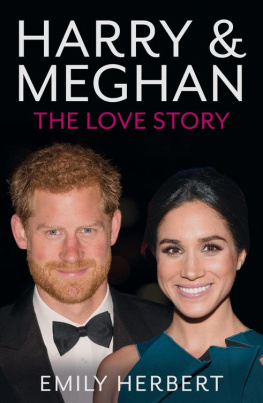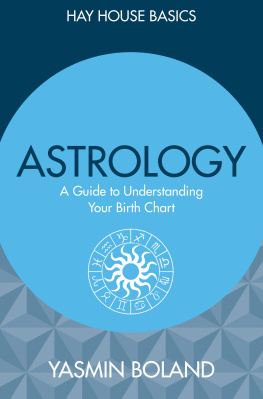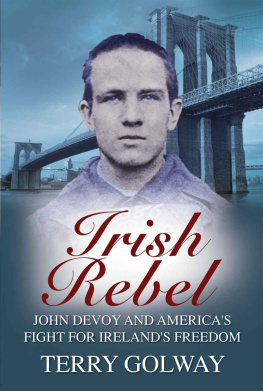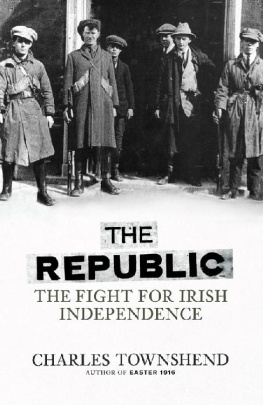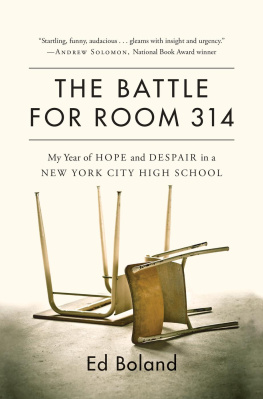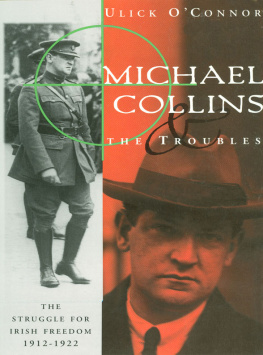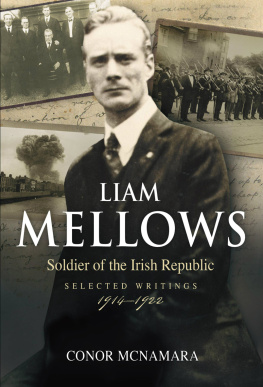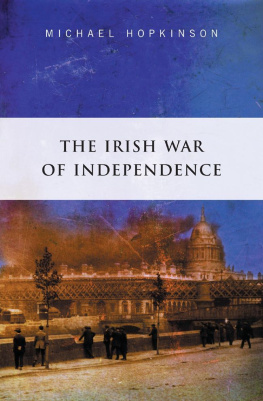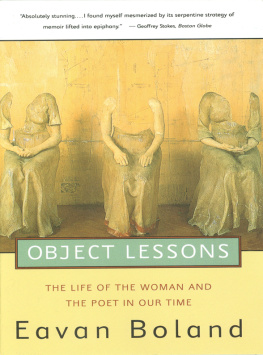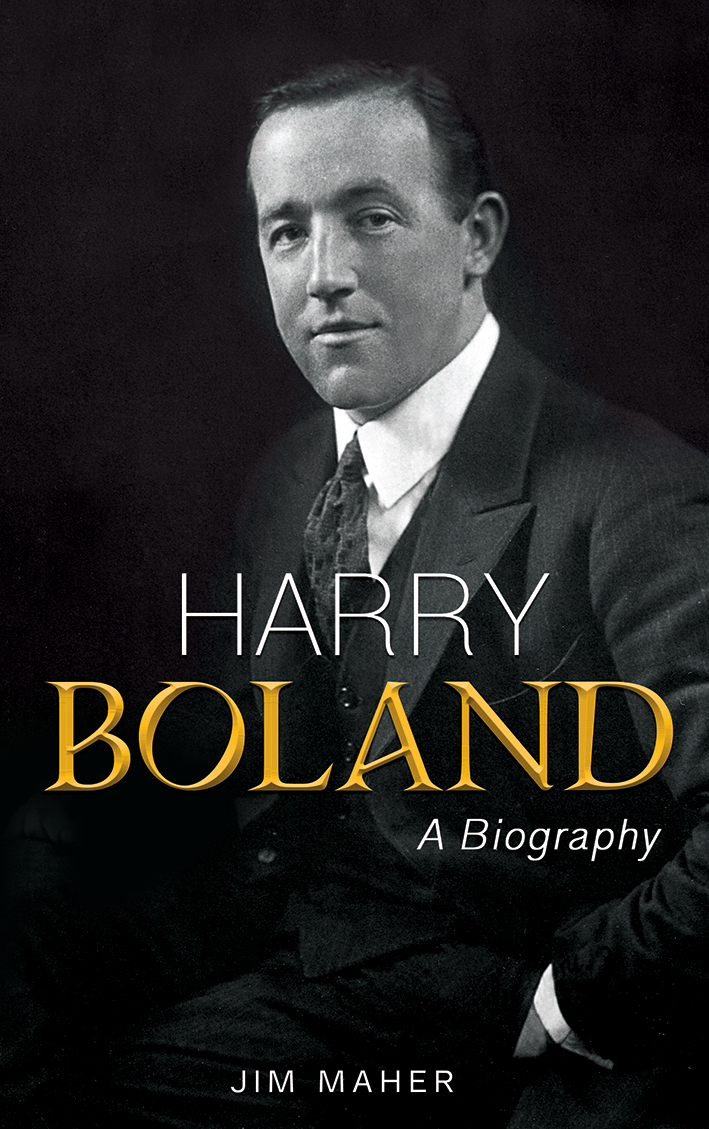
Dedicated to Mary
and my father and mother.
Acknowledgements
Only the assistance of many people made it possible for me to complete the first edition of this book. My wife, Mary, helped me in researching the book, in organising my research material and in proofreading. Mrs Patricia OReilly, Dublin, acted for me in securing a publisher and I am indebted to her.
The Boland family was courteous and co-operative. Harry Bolands eldest nephew, Kevin, assisted me with reminiscences and information, and we travelled to many places, visiting all the haunts that Harry frequented during his short life. Harrys other nephew, Annraoi, provided me with recollections, photographs, letters and papers that were invaluable to me in this work. Harrys niece Eileen Barrington answered, at all times, any queries of mine by phone or personal contact. Fionnuala Crowley, Cork, another of Harrys nieces, opened her door to me and put all her documents, letters and photographs at my disposal.
During my long years of research into the Civil War, I spent much time in the Franciscan Library, Killiney. Fr Ignatius, the curator of the library, and Ciara looked after me well. Breandn MacGiolla Choille, who catalogued the De Valera Papers, gave me personal insights into Civil War matters.
I greatly appreciate the assistance and courtesy of the following: Samus Helferty, Kerry Holland and all others in the UCD Archives; the keeper of Trinity College manuscripts; Commandant Peter Young and Commandant Victor Lang and their assistants in the Military Archives, Cathal Brugha Barracks; my acquaintances in the National Archives, Bishop Street; the staff of the National Library of Ireland; Maura Kennedy and her co-workers at the Gilbert Library, Dublin; and the personnel of the Public Record Office at Kew who made me so welcome.
In the USA I thank all those I met in the various universities, archives and libraries, and the staff of the National Archives, Washington.
I wish to thank all my good friends in the Irish public libraries that I visited. I thank Jim Fogarty and his staff in Kilkenny County Library for procuring for me many texts that were out of print through the library loan scheme.
I am grateful to all those who gave me private family papers.
My sincere thanks to Tom Nolan for his work on the original index and John Mulloney for proofreading.
There are also many people I have to thank for this updated reissue of Harry Boland: A Biography . Tadhg J. Crowley, a grandnephew of Harry Boland, who was in contact with me, showed a keen interest in having the first edition (1998) re-published. He approached Mercier Press in this regard. To our mutual delight he received a positive response from Patrick ODonoghue, whom I later had the pleasure of meeting. Mary Feehan reread the original print of the book and gave her expert advice. She handed over the editing to Noel ORegan, who turned out to be a first-class editor, available at all times and a pleasure to work with. Sarah OFlaherty designed a new, attractive cover that does full justice to the character and appearance of Harry Boland. I appreciate the excellent work of both Wendy Logue, who did further editing and arranged the set-up of the book, and Deirdre Roberts, who fulfilled the role of publicity manager and kindly met me to explain her plan in this respect. I was glad also to hear from Jennifer Armstrong, Merciers external proofreader, when we finalised a few last details. All credit to all the Mercier Press staff for this fine production.
I am grateful to Bernie Metcalfe of the National Library of Ireland, with whom I spent two sessions when she procured suitable photographs for me and put them on a CD. In this respect, I got initial help from Lydia. In the manuscript room of the National Library, Nora Thornton produced a copy of Joe McGarrittys newspaper, The Irish Press , dated 7 January 1922, which gave me important information.
I am indebted to Paddy Flanagan of Kieran Whites Pharmacy, Kilkenny, for reproducing some faded photographs. I would also like to thank Alison Mulloney for some research information she sent me.
I regret if I have inadvertently omitted any particular name.
Jim Maher
I
Born into Patriotism
Irish freedom meant everything to Harry Boland. This yearning had been handed down to him from past generations on both sides of his family. Harrys father, Jim, met Catherine Woods in Manchester while he was working at the laying of the Manchester Tramways. Catherine was born in Manchester in 1861, of Co. Louth lineage. Her father, Philip Woods, came from the Carlingford area. Her great-grandfather, James Woods, a blacksmith from Cooley, was whipped through the streets of Carlingford, tied to the back of a cart, for making pikes for the rebels in the 1798 Rising.
Jim Boland could trace his roots to the townland of Cams in the parish of Fuerty, Co. Roscommon, but he was born in Manchester in 1857. His father, Patrick, was very active in the Irish Republican Brotherhood (IRB), a secret, oath-bound organisation dedicated to establishing an independent Ireland.
Jim arrived in Dublin for the first time in 1880 as a foreman with the Liverpool firm Worthingtons, which had secured the contract for paving Dublins streets. Shortly afterwards, the city council decided to do the work by direct labour and Jim was given the job of overseer, with a weekly wage of 2. On 21 October 1882 he married Catherine in St Kevins Church, Harrington Street.
While in Dublin, Jim became a member of the Supreme Council of the IRB. He was also the centre (secret leader) for the province of Leinster and at one time chairman of the Dublin Directory of the IRB. Within the Directory, Jim was very friendly with Denis Seery. Denis was a first cousin of Thomas Tynan, who was a strong Land Leaguer and also a member of the IRB organisation in Leinster. Denis often visited the Tynan home Peafield House in Mountrath and he introduced Jim to the family.
In September 1882 an attempt was made to evict the Tynans, as they were unable to pay the increased rent of 4 an acre. The Tynan familys imposing twelve-roomed, two-storey house stood on 175 acres of good Queens County (Laois) land. Almost 400 people from the local community assembled to prevent the bailiffs from seizing the cattle and horses on the farm or occupying the dwelling house. The bailiffs and police eventually withdrew, though they were expected to return, so Jim and Denis decided to try to frighten them. Jim constructed a bomb, which he gave to Denis, who then planted it near the land agents house in Cool, not far from Maryborough. The bomb went off at 2 a.m. on Christmas morning 1882. It did considerable damage to property, but no one was injured. However, the landlord became worried and, as a result, came to an arrangement with Thomas Tynan, whose rent was reduced from 4 per acre to 1 per acre. The Tynans of Peafield House would always remember the help Jim gave them.
Heavy police surveillance of Jim soon forced him to leave Ireland for America with his young bride. For the next two-and-a-half years he organised Fenian activities in many parts of the USA. A younger brother of his, John P., was already a Fenian organiser there, having been sent out by the IRB to keep in touch with the Republican Clan-na-Gael movement in New York.
Jim and Catherines first child, Nellie, was born in America in 1884. They left in 1885 and initially went to Manchester, where their first son, Gerry, was born in May 1885. When Gerry was just six months old, Jim and his family moved back to Dublin, taking up residence at 6 Dalymount Terrace, Phibsborough. Jim resumed his job with the paving department of Dublin Corporation. The couples second son, Harry, was born on 27 April 1887, followed by Kathleen in 1890 and Edmund (Ned), the youngest, in 1893.

